Virtually unknown, Khao Hin Tat Ancient Quarry (แหล่งหินตัดเขาหินตัด) lies a kilometer away as the crow flies (by road it’s either two or three kilometers, depending which direction you’re driving due to needing to U-turn on the Mittraphap highway) from the well-known Si Khio Ancient Quarry, and naturally they share similar characteristics and histories.
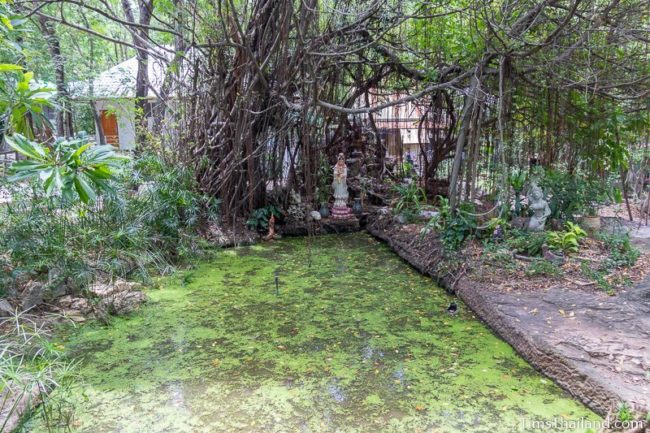
The grey sandstone is of the Phu Phan Formation, which is around 120 million years old. The stone was probably used to construct nearby temples including Prasat Hin Muang Kaek, Prasat Hin Muang Khao, and Prasat Ban Bu Yai. The Lam Takhong river is just 600m away and the blocks would have been floated downstream on rafts to the building sites.
The quarry is at the northeast end of Wat Pa Khao Hin Tat temple, next to the rong krua (“kitchen”) on a northeast-facing slope of Khao Hin Tat (“Stone-Cutting Hill”) and has five distinct sections spread over about 1,600 square meters.
The first thing you’ll see is a shallow (about 50cm deep) pond formed where sandstone blocks were cut out. Here, as elsewhere, the carving marks made by the masons’ iron tools are clearly visible on the sides. Only one block remains intact (at the back end under the tree and has a Guan-Im Goddess of Mercy statue on it) though apparently some intact blocks just to the southwest of this pond have been covered by temple construction. You can’t see the “footprints” where the blocks were removed because the pond has water (and a few catfish) year-round.
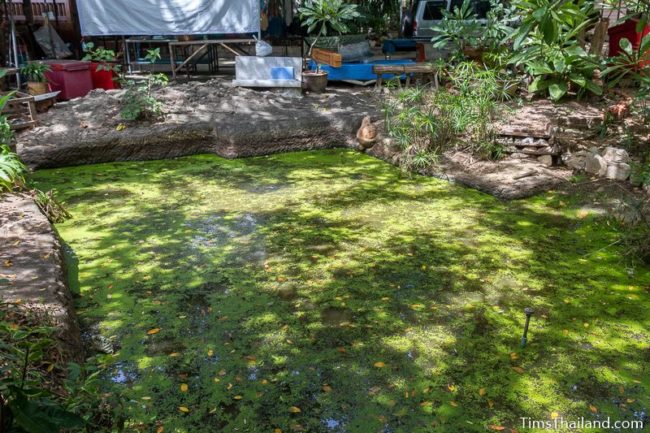
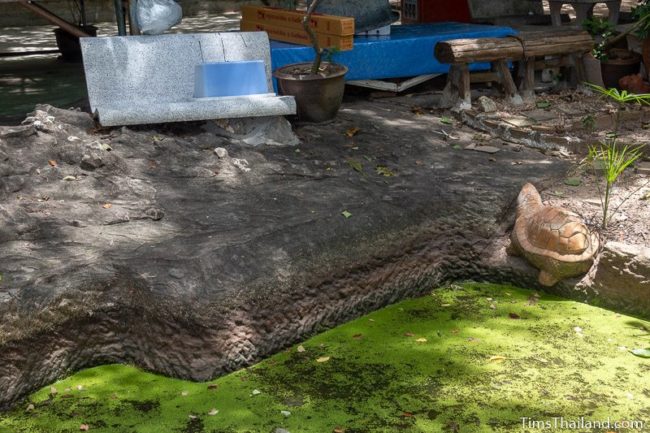
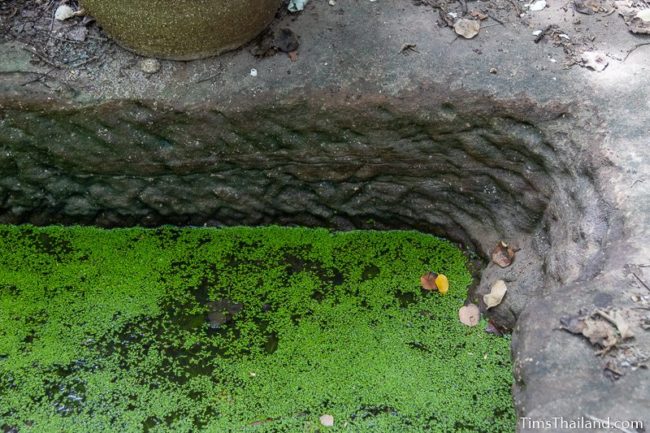
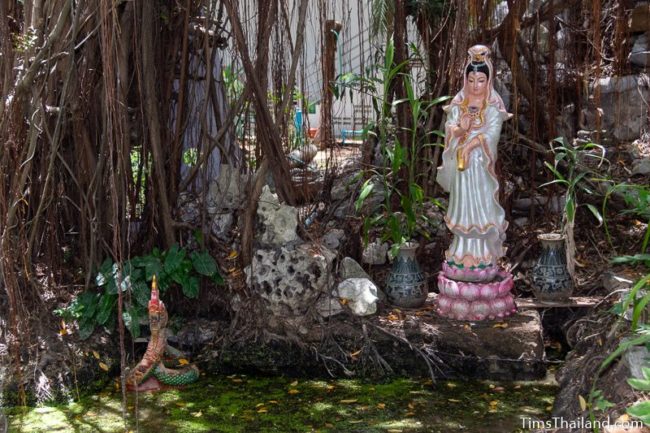
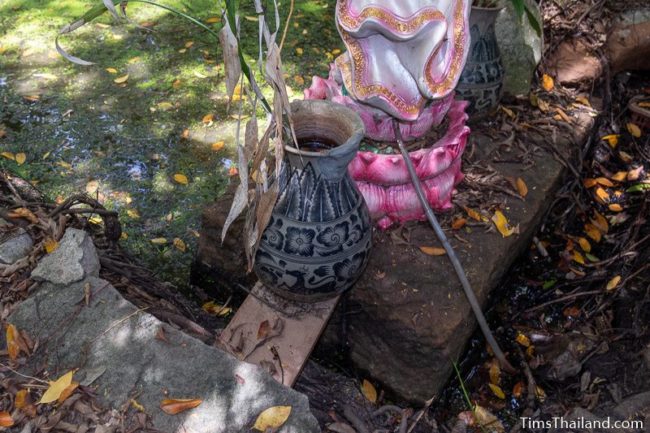
A slightly bigger pond, also formed from a cutting site, sits just to the east of the first one: it’s alongside the stilted building, which actually sticks out over it. Most of the sandstone was removed from this one too, though a few blocks remain and more are intact on the slope above the pond. This one dries up completely by the hot season.
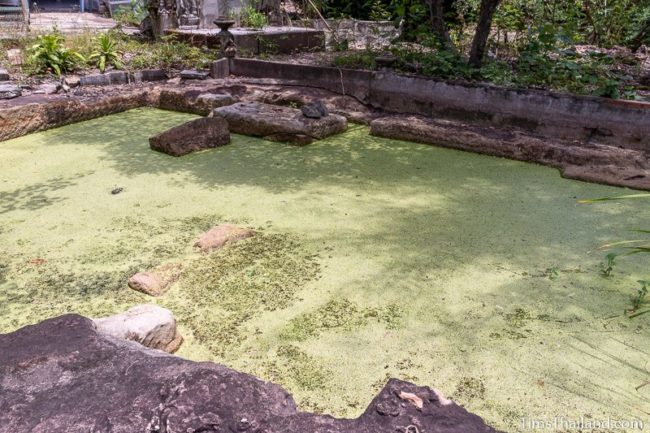
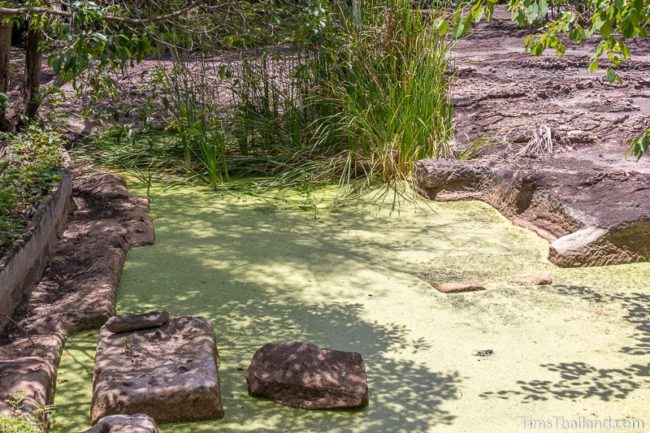
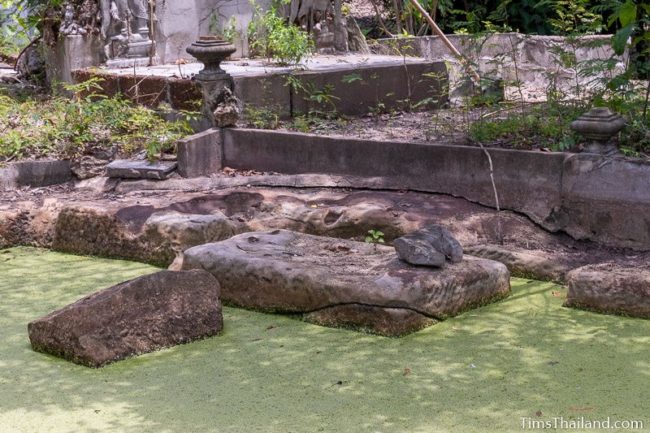
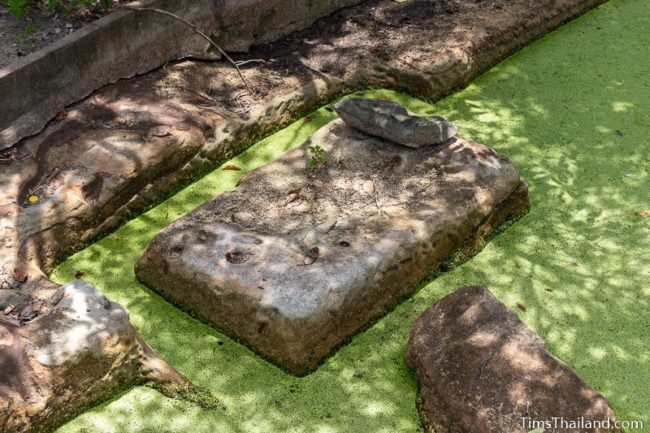
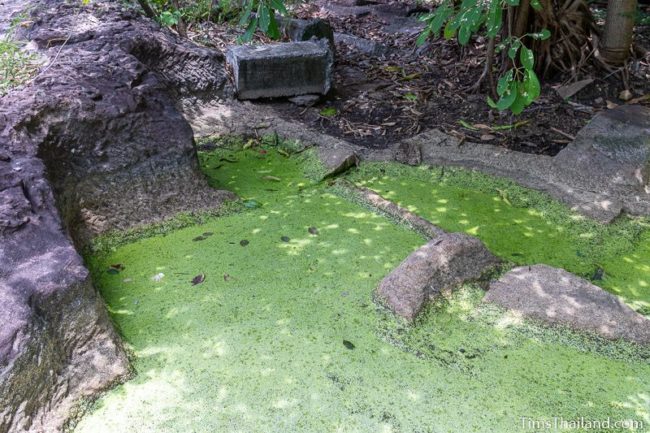
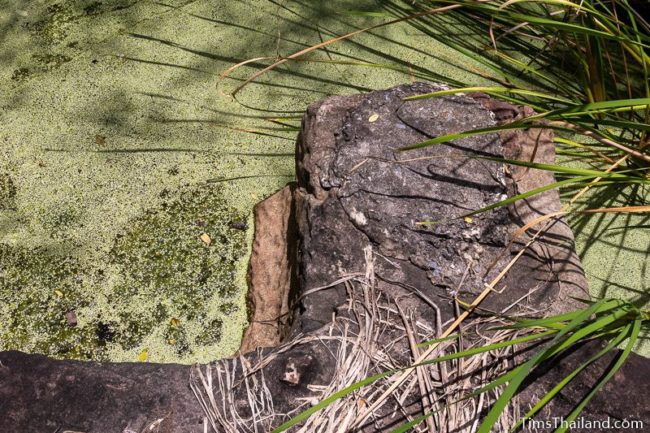
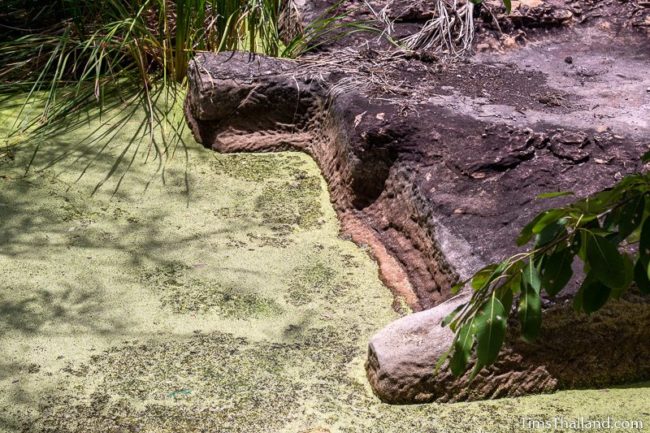
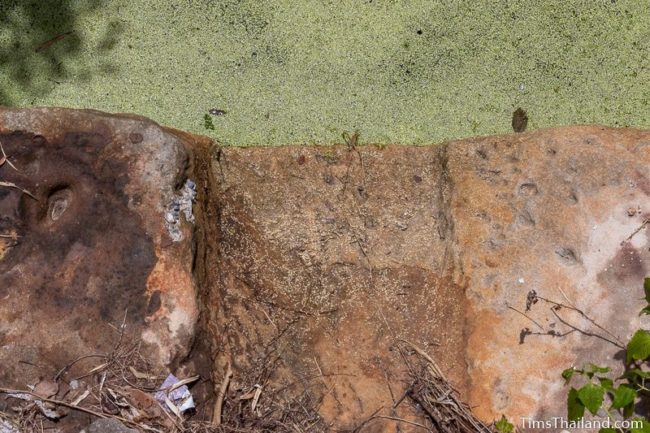
A path from the first pond, marked by a sign with an arrow leads about 50 meters (the “800-1000” on the sign is years, not meters) down to the biggest section of the quarry, and halfway there the path passes a long ledge where blocks were removed, and at its base you can see footprints from those blocks.
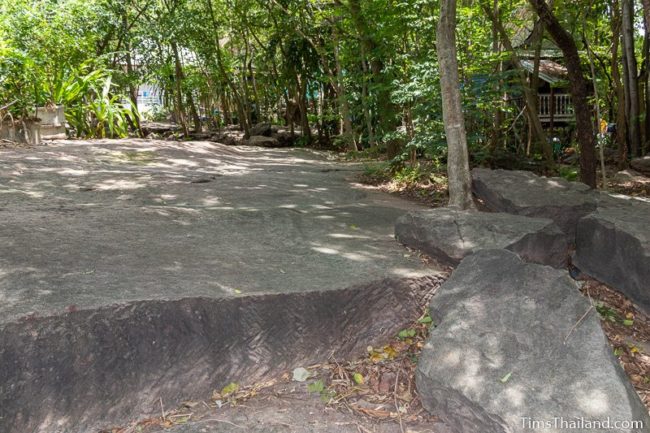
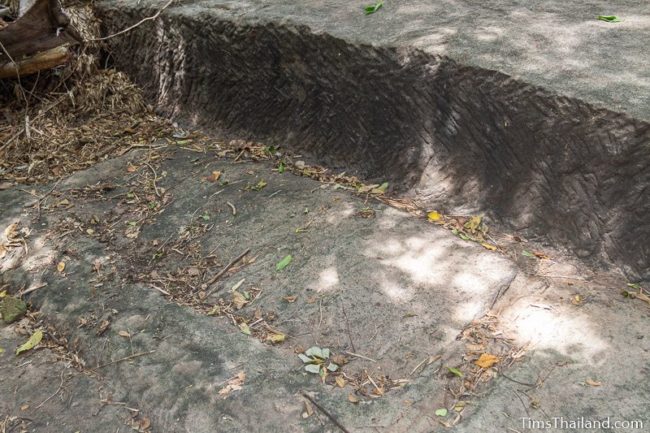
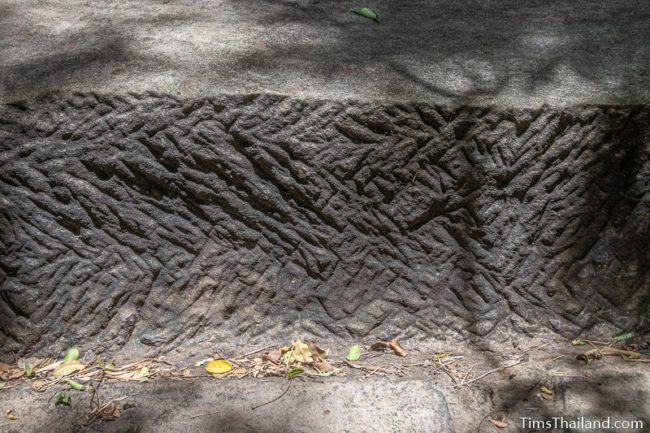
The main section of the quarry is on the north (left-hand) side of the path where dozens of sandstone blocks of various sizes were carved out. Some remain attached and others have been broken off (probably by filling the gaps with wood and water and letting the expanding wood cause a crack at the bottom). In this section (and the next one), the footprints of blocks that were hauled away lie under dirt and leaf litter and so can’t be seen.
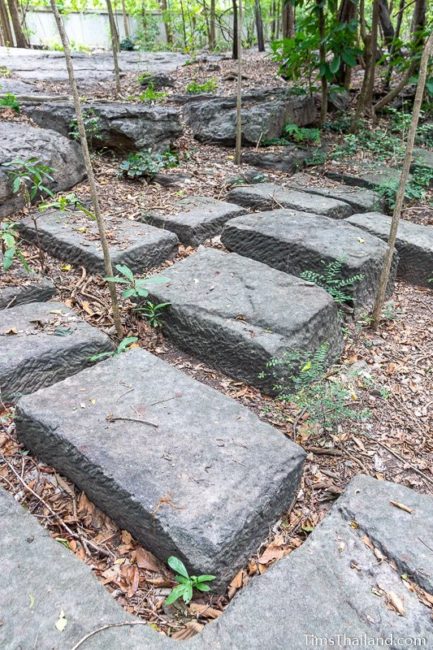
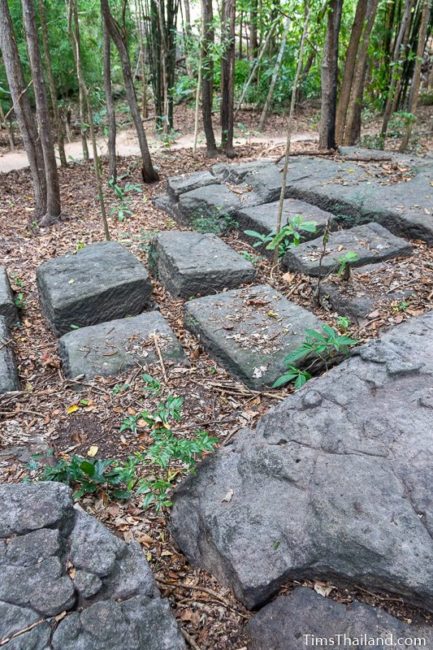
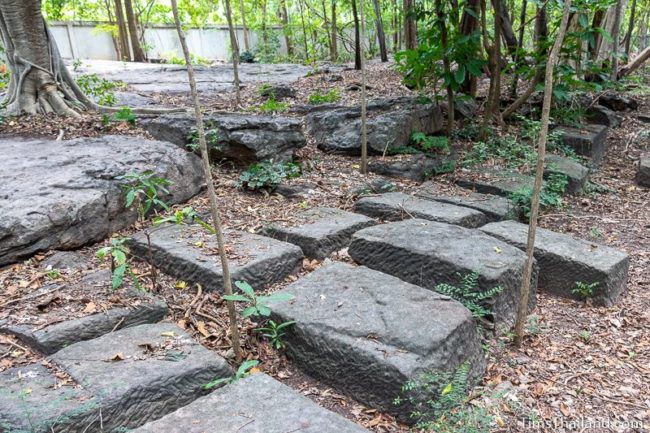
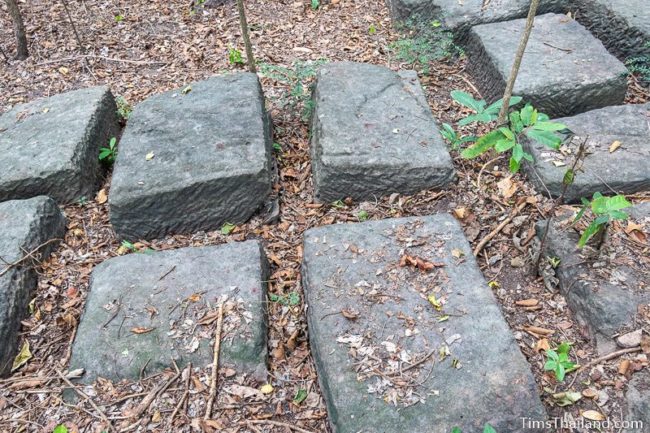
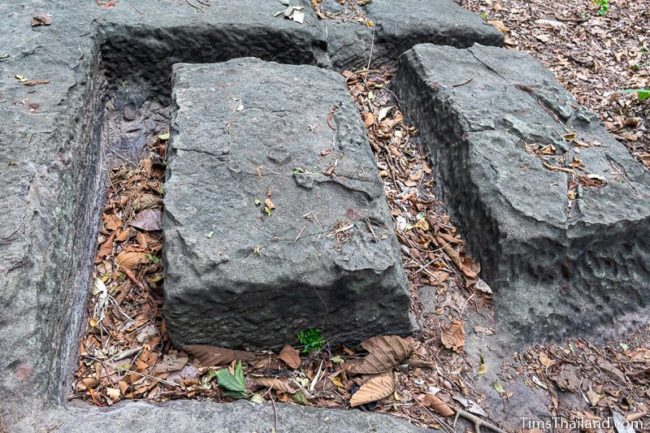
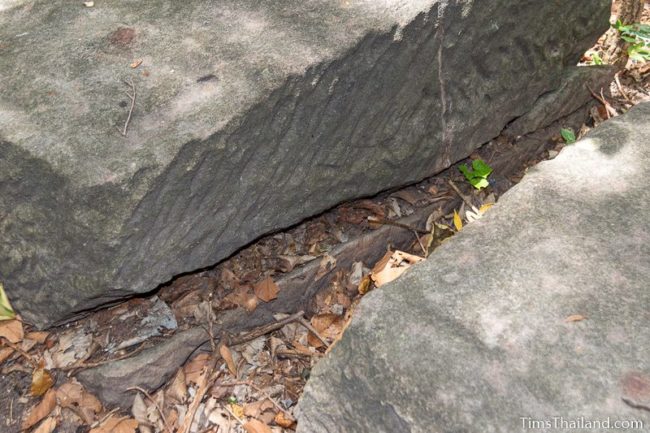
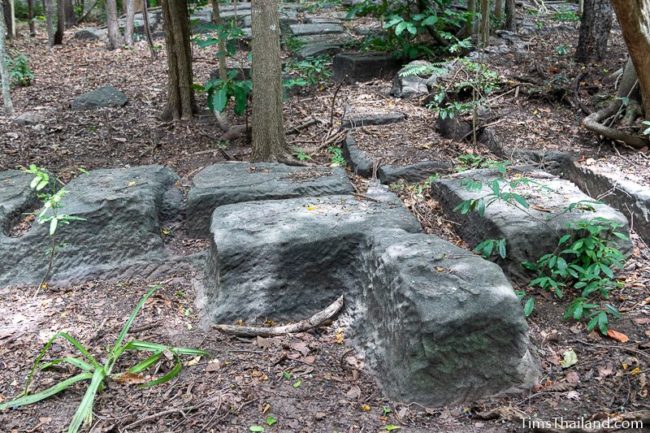
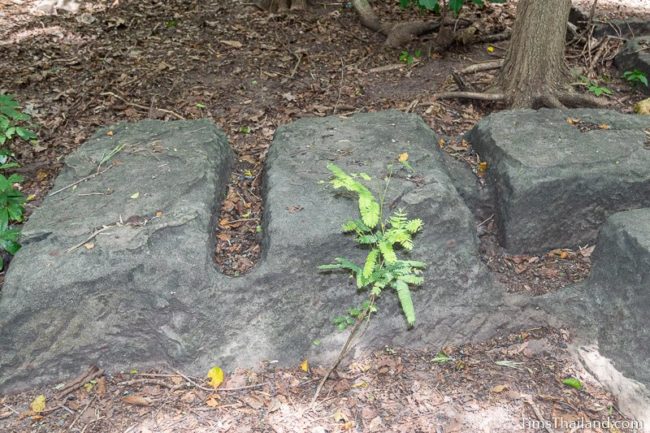
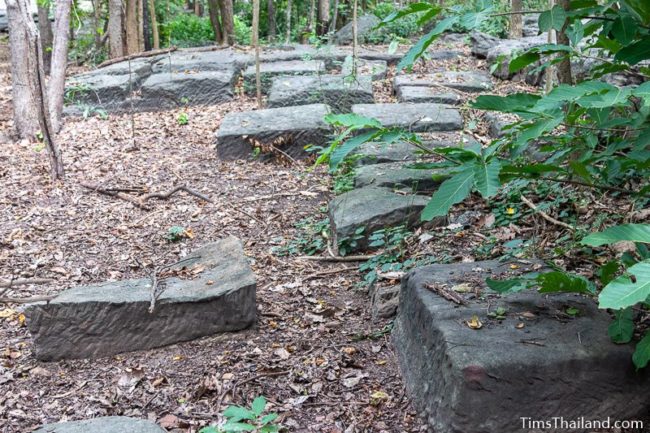
The section south of the path is essentially the same as that to the north, but a bit smaller. There’s a cave that’s sometimes used for meditation in the big rock outcrop behind the quarry.
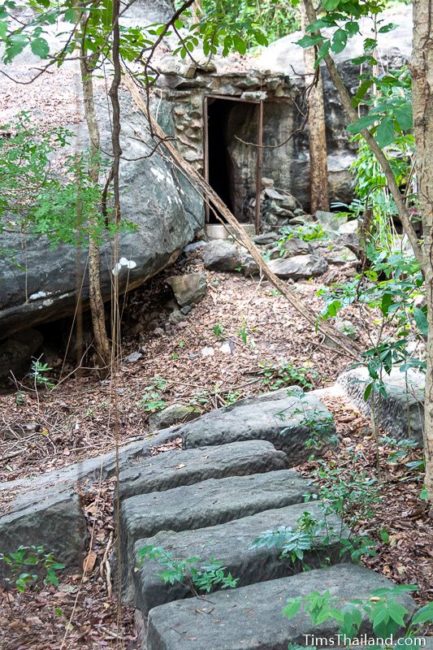
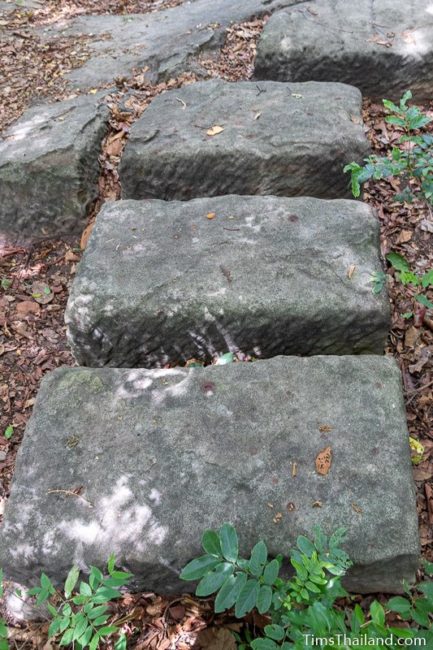
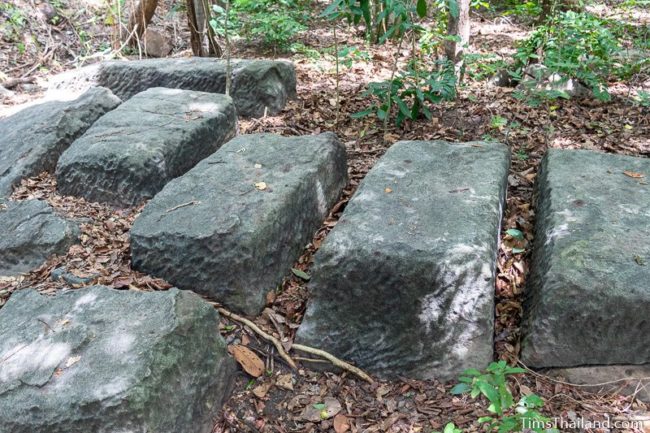
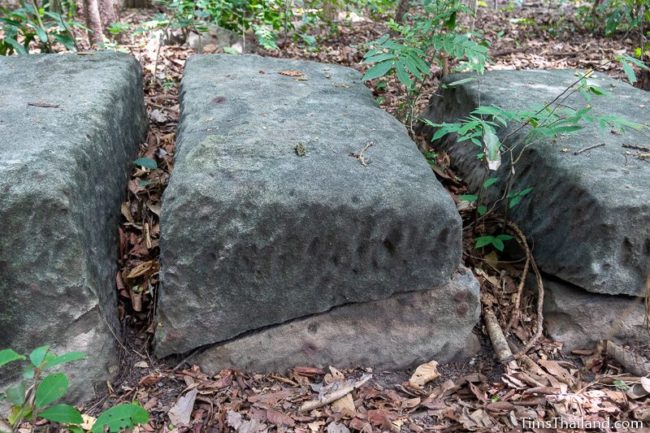
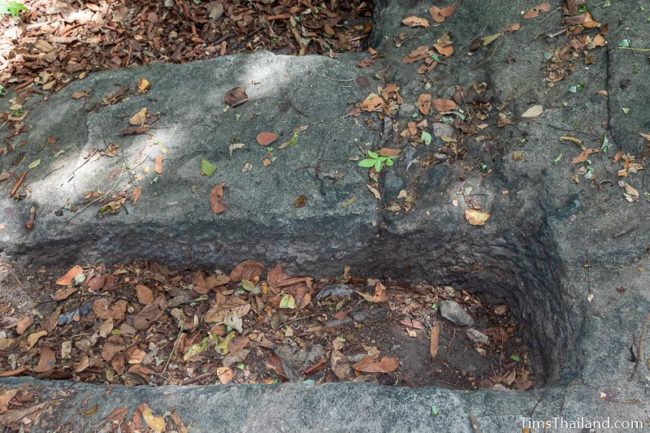
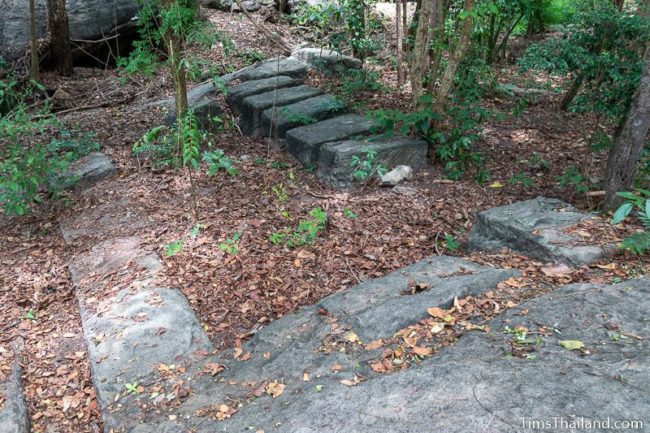
No other cutting areas have been found on or around the temple grounds, though apparently no thorough end-to-end search has been done. The abbot suggested we go look at a seasonal pond with many large rocks just outside the temple’s western border (on the other side of a barbed wire fence) that he had heard could also be a quarry site, but we found no cutting there. Probably it’s just an area that some locals have used to get some sandstone rocks.
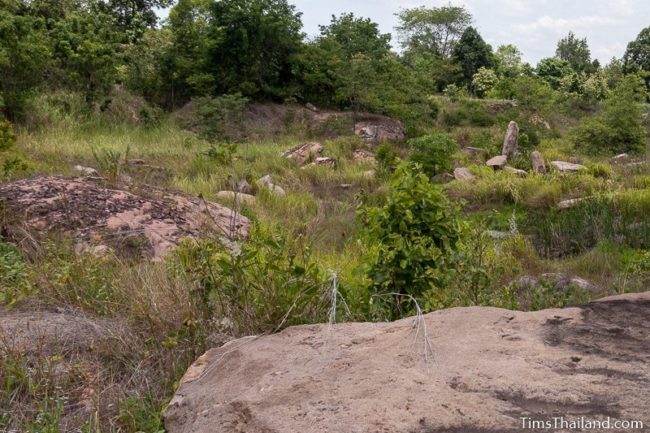
The temple follows the Theravada forest traditions of Ajhan Chah. Many people come here for meditation and the one daily meal, eaten about 9.30am, is entirely vegetarian. About a dozen monks and a dozen nuns (mae chi) reside here.
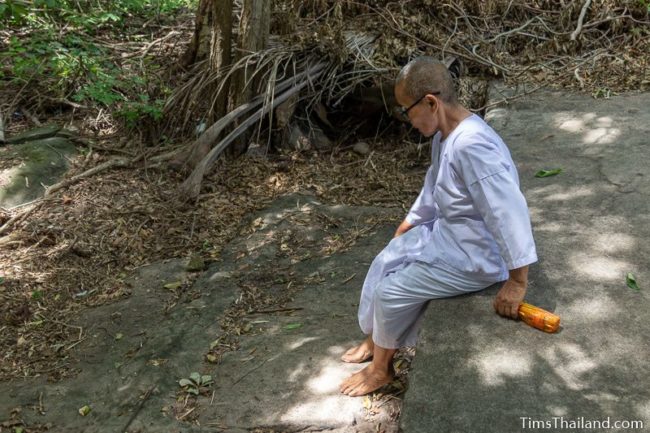
Location – Wat Pa Khao Hin Tat, Tambon Lat Bua Khao, Amphoe Si Khio, Nakhon Ratchasima Province
Other Names – แหล่งหินตัดเขาหินตัดม แหล่งหินตัดวัดป่าเขาหินตัด
One thought on “Khao Hin Tat Ancient Quarry”
wonderful article. I wonder how modern quarry works? maybe there is clue to help us to know how stone block is extracted